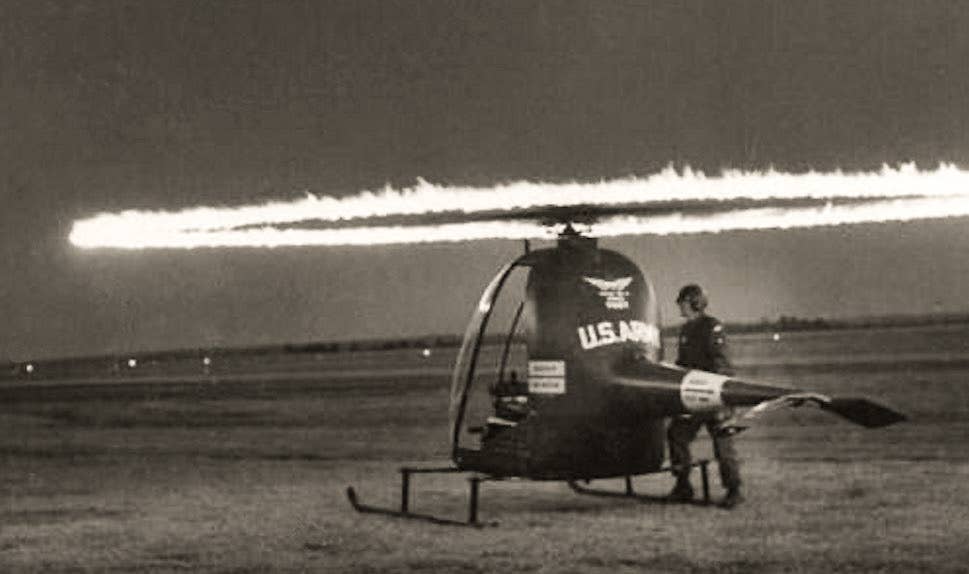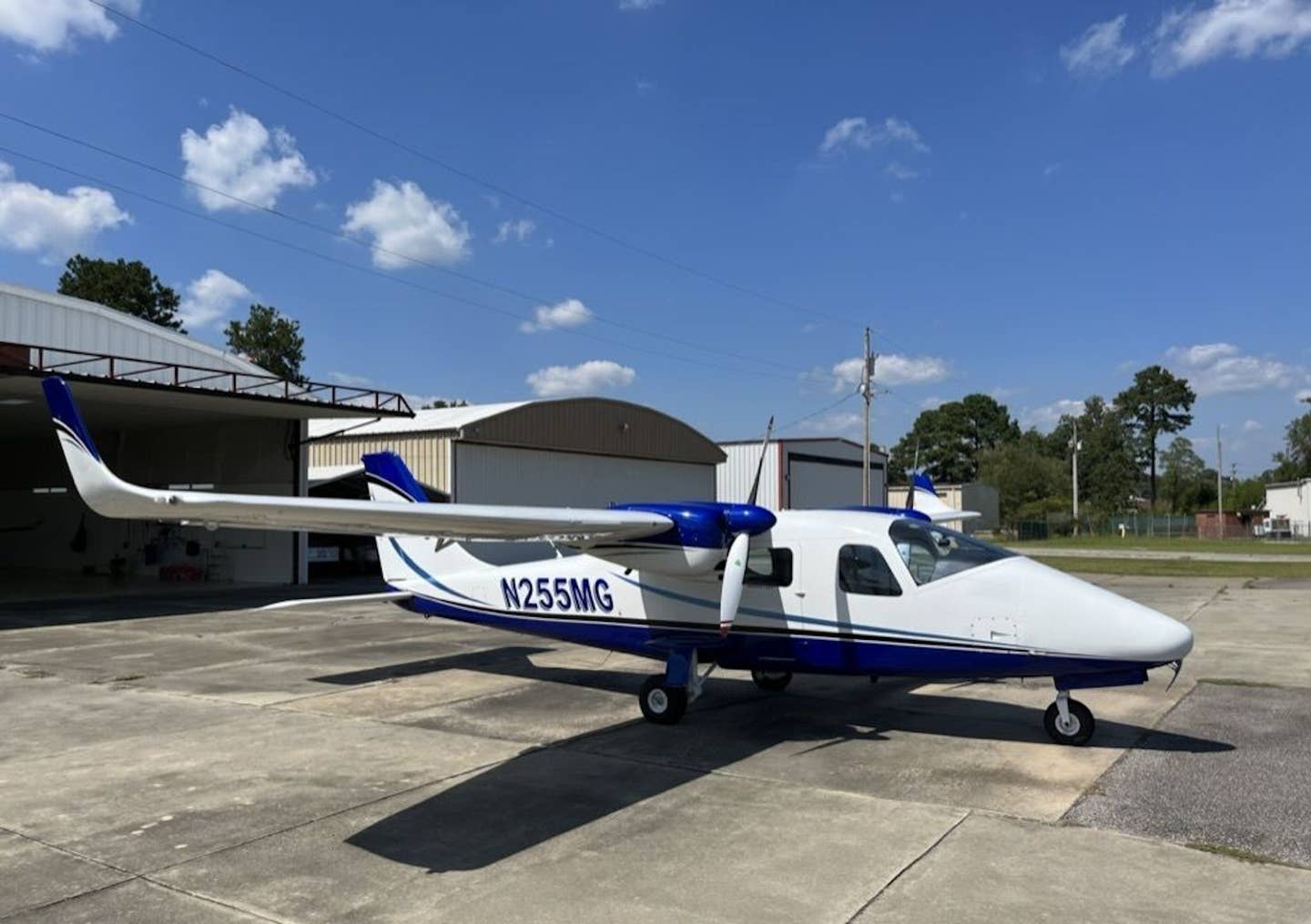The Hiller Hornet and its Ill-Fated Ring of Fire
With fire-breathing ramjets mounted to the tips of the main rotor, Hiller’s tiny Hornet boasted an endurance of approximately 30 minutes.

Because its tip-mounted ramjets created a visible ring of fire at night, the Hornet was deemed unacceptable for tactical use, as it could be so easily spotted by the enemy. [Courtesy: U.S. Army]
For a time in the early 1950s, a small number of U.S. military pilots were able to claim their job was to fly experimental aircraft powered by ramjets that created streaks of flame and lit up the night sky. This undoubtedly created visions of sleek, supersonic machines such as the F-104 Starfighter and the F-106 Delta Dart, earning admiration and street cred in bars surrounding their respective bases. The bar patrons would surely have been transfixed.
Had they asked the pilots a few additional questions, however, the complete picture would have been revealed. They’d have learned that the aircraft type in question was a tiny helicopter called the Hiller Hornet. It utilized two ramjet engines to achieve a top speed of just 62 knots and had a maximum range of less than 30 miles. While perhaps not as flashy as the aforementioned supersonic interceptors, some might argue that it took more guts to fly the Hornet.
The impetus behind the general design of the Hornet was torque. When power is applied to a stationary main rotor on a traditional helicopter, the fuselage naturally wants to spin in the opposite direction. The traditional tail rotor acts as a lateral propeller, enabling the pilot to push the tail left or right to counteract this torque effect precisely.
The Hornet's designers attempted to eliminate the torque effect. They reasoned that controllability would be improved if the main rotor could somehow be powered by an engine or engines that did not apply any torque to the fuselage. Additionally, the relatively complex tail rotor assembly and associated drive shafts and linkages could be eliminated.
They brought the concept to fruition by placing two 11-pound ramjet engines on each tip of the two-blade main rotor. Each engine generated 31 pounds of thrust by drawing fuel up from a fuselage tank and through lines buried within its respective blade. Interestingly, these engines had no moving parts and could burn several different fuel types. They had a projected service life of 500 hours and were touted as being replaceable for only $200 each, amounting to $2,454 in 2024 dollars.
Unfortunately, while the torque effects were eliminated, the new design came with several very serious inherent drawbacks. Chief among them was the high fuel burn of the ramjets, which amounted to 600 pounds per hour at higher power settings. With a 300-pound fuel capacity, endurance was minutes rather than hours.
Autorotations were also a problem. The tip-mounted engines introduced drag and inertia to the rotor, making it difficult for pilots to increase rotor RPM in the event of a power loss and then accurately convert that RPM to lift when slowing the descent rate to touch down.
While the Hornet’s design eliminated the need for a tail rotor mechanism, it did require a small gasoline engine for starting purposes. This engine spun the main rotor to an RPM sufficient for the starting of the ramjets. So, while the complexity of a tail rotor was eliminated, much of the weight saved was reintroduced with the addition of the starting engine.
The military took an interest in the Hornet and conducted an evaluation process. Although the helicopter was indeed flyable and controllable without a tail rotor, the military decided they preferred the additional yaw control that a tail rotor provides. Subsequent models of the Hornet, therefore, incorporated a small tail rotor to satisfy this requirement. The tail rotor used was small in size and was powered by the starter engine. It was unique, as well, utilizing just one blade and a counterweight as opposed to a traditional, two-blade design.
The military discovered some additional problems with the Hornet. The combination of the helicopter’s small size and the droop of the rotor blades meant that it could not be approached while the rotors were turning. This limited the usability in the field.
Additionally, the ramjet engines created vivid, flaming exhaust trails. This produced what appeared to be a brightly illuminated ring at night. Tactically, this made the Hornet very easy for enemies to spot in the night sky, and in peacetime operations, it reportedly resulted in an overabundance of UFO sightings.
Ultimately, a total of 18 Hornets were built, and while the Army and Navy evaluated the type, no production orders resulted. Today, approximately eight Hornets are in storage and on display at various museums across the U.S.

Subscribe to Our Newsletter
Get the latest FLYING stories delivered directly to your inbox






